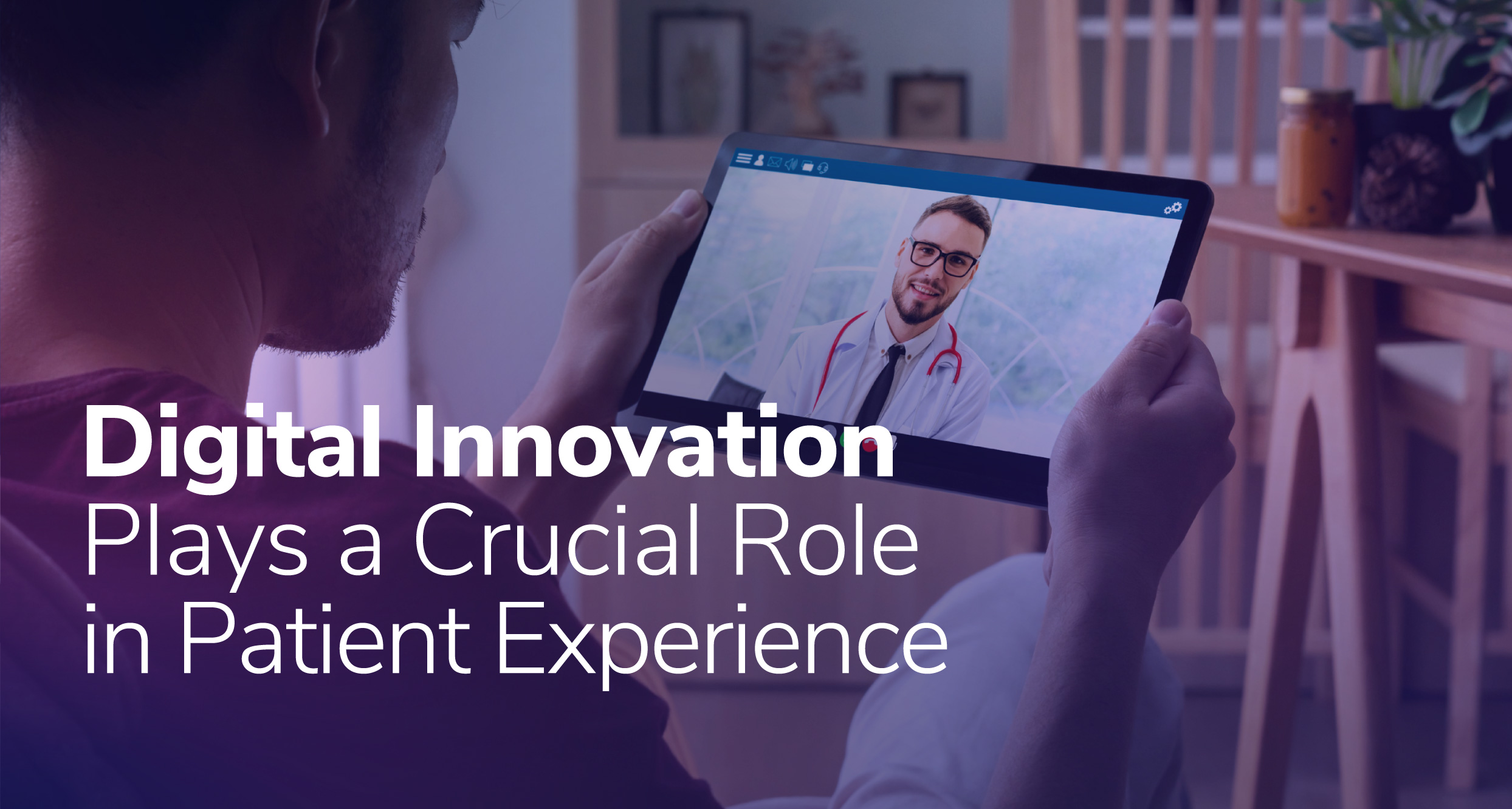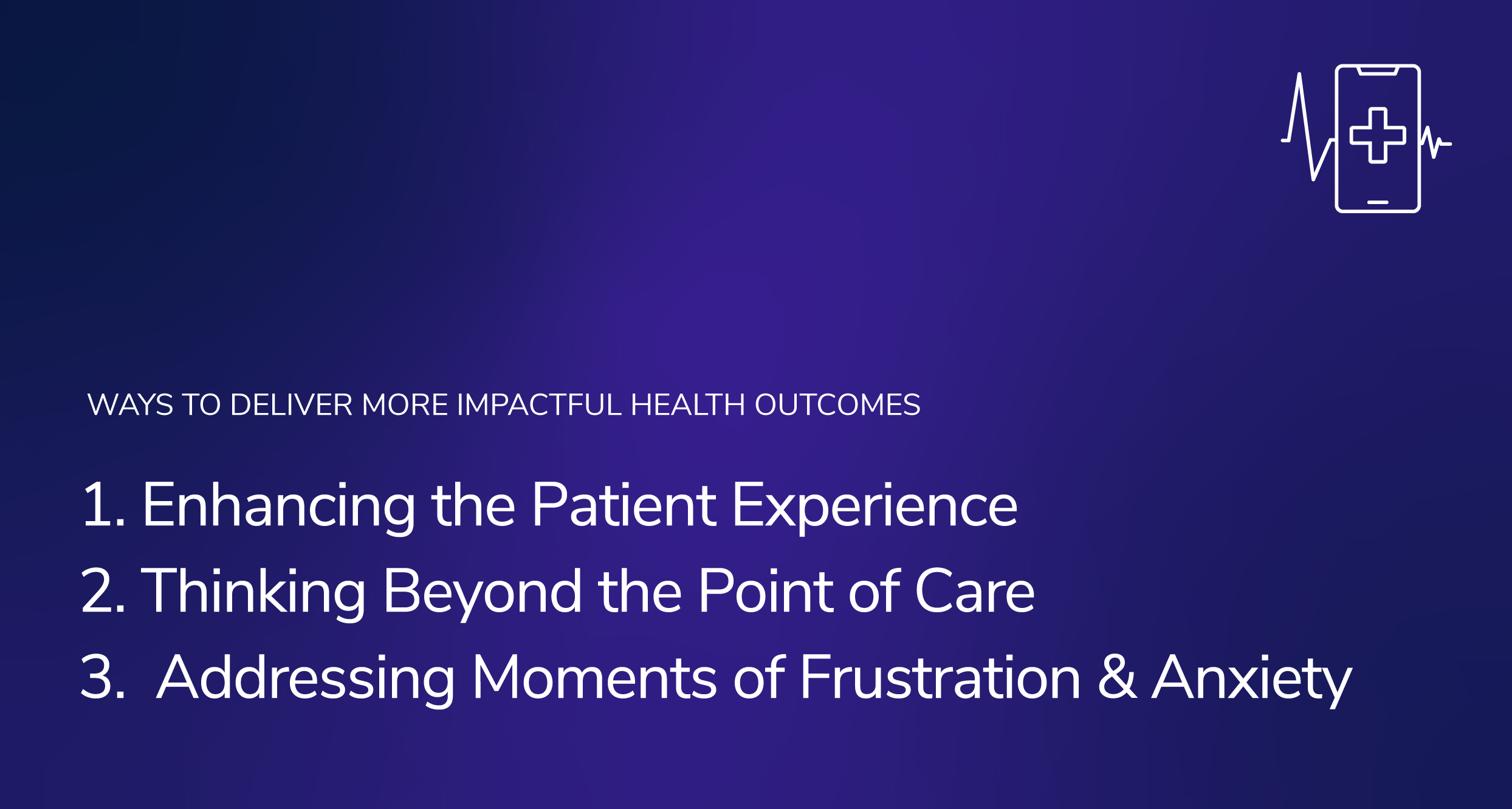Enabling a Better Patient & Care Team Partnership through Compassion, Communication, and Innovation

The healthcare industry has always been at the forefront of change. Recent legislative developments at both the national and state levels continue to reshape the landscape of healthcare in unprecedented ways – from improving coordination of care to driving technological infrastructure updates.
The industry has been met with difficult conditions in the face of continuing high inflation rates and labor shortages. There is also no shortage of care needs, which is taking a staggering toll on care in a highly complex system. Health literacy struggles persist, and the pressure to reduce costs and drive operational efficiencies has significantly intensified in our economic climate. Hospitals are on a relentless quest to trim costs and enhance operational efficiency, focusing on reducing readmission rates to ensure sustainable healthcare practices. Not to mention the healthcare experience is different for everyone – particularly across socioeconomic status, age, geography, language, gender, disability status, citizenship status, and sexual identity and orientation. Amidst these complexities, consumer expectations are at unprecedented heights. The goal is to keep the patient in control and at the center of their healthcare journey while addressing the change around them.
These changes and variables are prompting healthcare organizations to reevaluate the patient and care team journeys. This has helped to identify opportunities to streamline omnichannel engagement and maintain a technological infrastructure that enables compliant, patient-first experiences that relieve the everyday pressures often met as part of the changing healthcare landscape.
The silver lining is that healthcare organizations are rallying to address these challenges, making way for a new era of empathy and innovation.
Healthcare Companies Recognize the Challenges
Given the difficult industry conditions, healthcare organizations recognize the urgency to reshape the healthcare narrative, and they are trying to get closer to those they serve and deliver greater health outcomes by making their brands more personal and personalized.
Companies recognize this requires a shift in how they present their brand and how and where they engage with people. Healthcare organizations are investing heavily in CX, digital products, and test-and-learn programs to capture critical insights – from supporting early diagnosis to care preparation and post-discharge adherence – and looking for ways to deliver more impactful health outcomes.

They’re focused on enhancing the patient experience as a whole, thinking beyond the point of care to turn care into an everyday thing, and specifically addressing moments of frustration and anxiety.
The end-to-end patient experience includes finding a provider that is right for you across multiple dimensions, scheduling an appointment, knowing what to expect when you arrive at the hospital, preparing for inpatient or outpatient procedures and post-discharge procedural care as well as billing, readmissions, and the caregiver role.
Allowing greater access to care delivery by leveraging new technologies and products is at the center of the digital revolution in healthcare. Healthcare systems need to use digital technology for innovative solutions to improve healthcare delivery and to achieve improvement in medical problems. The focus on education is taking center stage to empower patients and care teams (including doctors, nurses, caregivers, communities, schools, and more), addressing not just the immediate issues but the overall well-being of patients. From omnichannel and personalized journeys to patient communication orchestration, finding ways to communicate in formats and channels that resonate is unlocking powerful connections.
Many hospitals and health systems that have invested in innovation are now being recognized for ingraining innovation into their culture. This is where the industry is headed and why we’re excited by the possibilities. From creating a sense of serenity and expectation setting in moments of crisis to removing and managing some of the drivers of anxiety and the unknown, there are endless benefits of technology in enabling modern healthcare.
The Crucial Role of Digital Innovation in Patient Experience
Harnessing the power of a digital-first experience becomes paramount in this transformative journey. Digital products – whether that be patient portals or voice-controlled artificial intelligence devices – emerge as lifelines, aiding in early diagnosis, preparing for care, and ensuring post-discharge adherence.
Product development can address gaps in care – providing support to better understand the cancer care journey, for example, or providing clarity around a hospital visit. Digital solutions can augment care teams and reduce risk. Technology can also enhance self-service options to address call deflection. We’re seeing many in-hospital technology advancements that have enabled better patient and care team experiences, reducing the burden on hospital staff.
These innovations pave the way for a more streamlined and compassionate patient journey.
What to Do Now
There are many ways in which we can move the needle when it comes to optimized healthcare journeys that empower all those involved. Here, we’ve identified three great places to start.
- Engage with clinical teams, patients, caregivers, and care teams to identify points of friction within the patient journey. Understanding the whole patient journey, beyond immediate treatment, is imperative to create holistic health.
- Identify existing digital patient experiences that can be leveraged to initiate testing and learning, fostering a culture of continuous improvement toward delivering better care.
- Understand the state of your data and the tools and technologies you have to enable your CX vision today, as well as what gaps and challenges exist to evolve that solution.
The Business Impact: A New Dawn for Healthcare
When taking the whole patient journey into account and improving the patient experience, the impact is felt not only on patients and healthcare professionals but throughout the healthcare ecosystem and results in better health outcomes.
There are direct economic benefits when the cost of care is reduced – including cost savings driven by efficiency from the reduction of readmission rates, for example. Organizational savings are introduced through reduced patient cost of care through high acuity follow-up and improved by being able to focus on new patient acquisition versus repeat treatment of patients. Shifting the focus towards intake rather than repeat treatments lays the foundation for long-term healthcare relationships.
Prioritizing the patient journey results in increased lifetime value. As the healthcare industry embraces a future shaped by compassion and innovation, organizations, patients, caregivers, and care teams benefit from the evolution.
A healthcare organization’s digital transformation journey is challenging, but the rewards are transformative, promising a new dawn where healthcare isn't just a service but a compassionate, patient-centered journey.


